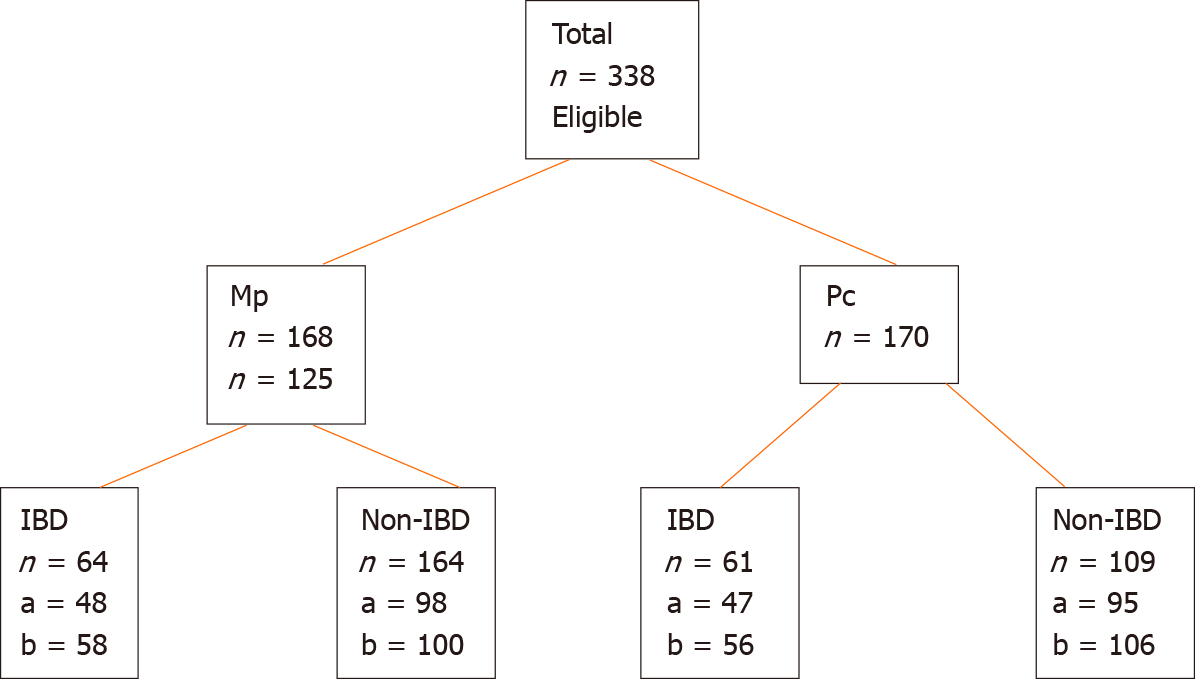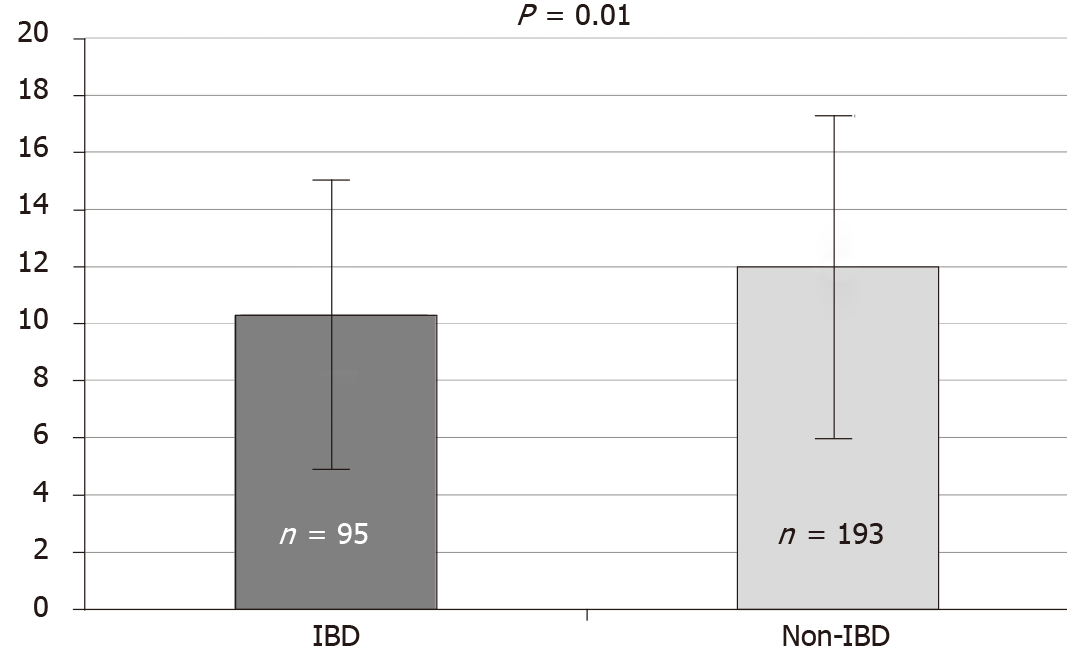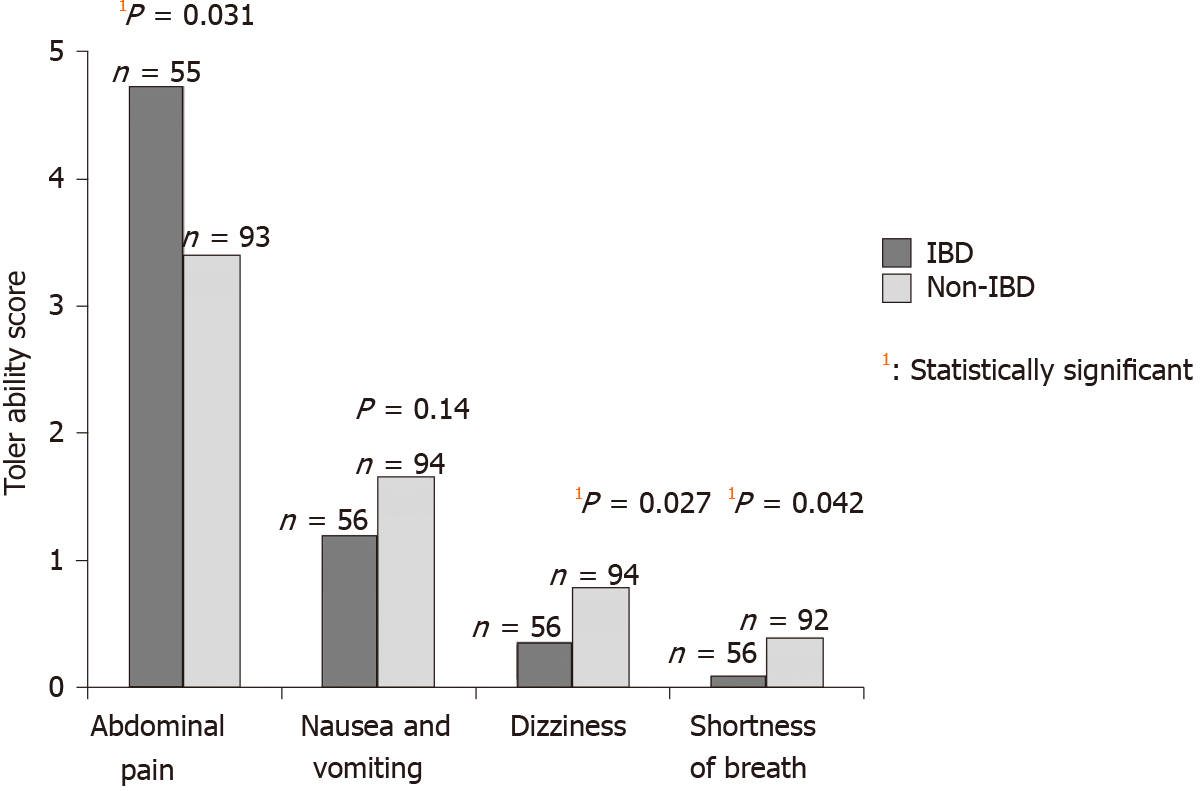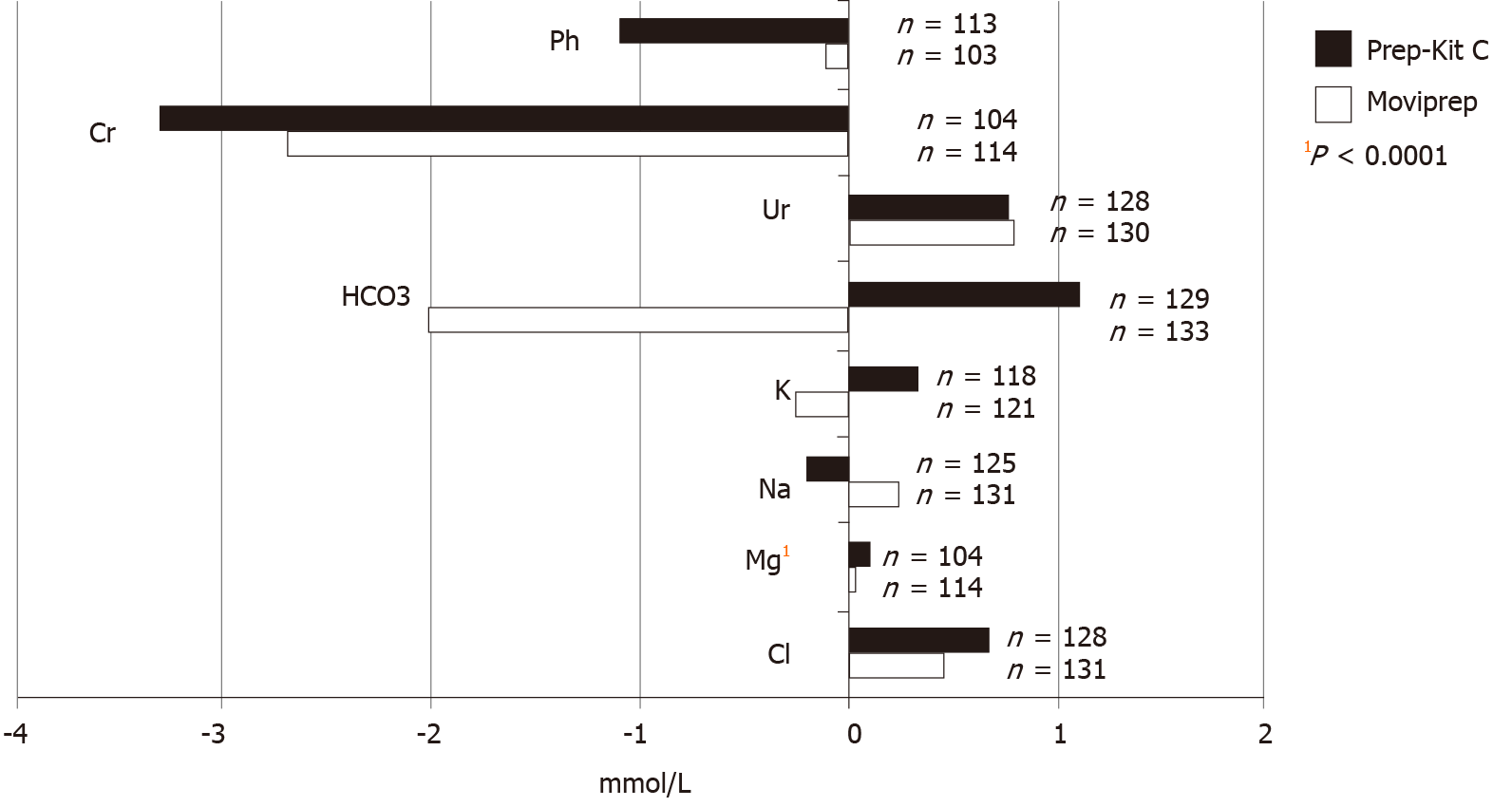Copyright
©The Author(s) 2021.
World J Gastroenterol. Mar 21, 2021; 27(11): 1090-1100
Published online Mar 21, 2021. doi: 10.3748/wjg.v27.i11.1090
Published online Mar 21, 2021. doi: 10.3748/wjg.v27.i11.1090
Figure 1 Randomization of bowel preparation.
a: Number of patients who completed tolerability questionnaire; b: Number of patients with validated Ottawa Bowel Preparation Scores; Mp: Moviprep; Pc: Prep Kit-C; IBD: Inflammatory bowel disease.
Figure 2 Total tolerability scores when comparing inflammatory bowel disease and non-inflammatory bowel disease cohorts.
Of 95 inflammatory bowel disease and 193 non- inflammatory bowel disease participants included. Higher score indicates better tolerability where 0 = poorly tolerated and 5 = well tolerated. Total score is out of 20 (0-5 for taste; 0-5 ease of ingestion; 0-5 for palatability; 0-5 for amount). IBD: Inflammatory bowel disease.
Figure 3 Tolerability scores according to specified symptom.
Of 56 inflammatory bowel disease and 93 non-inflammatory bowel disease participants compared. 0 = well tolerated and 5 = poorly tolerated. Maximum score for abdominal pain is 15 (0-5 points abdominal discomfort; 0-5 points for abdominal pain; 0-5 points for abdominal distension). Maximum score for nausea and vomiting is ten (0-5 points for nausea; 0-5 points for vomiting). The maximum points for dizziness or shortness of breath are 5 points. IBD: Inflammatory bowel disease.
Figure 4 Changes in electrolyte levels (n = 256) measured in mmol/L.
Levels compared between one week prior to procedure and day of the procedure.
- Citation: Mohsen W, Williams AJ, Wark G, Sechi A, Koo JH, Xuan W, Bassan M, Ng W, Connor S. Prospective single-blinded single-center randomized controlled trial of Prep Kit-C and Moviprep: Does underlying inflammatory bowel disease impact tolerability and efficacy? World J Gastroenterol 2021; 27(11): 1090-1100
- URL: https://www.wjgnet.com/1007-9327/full/v27/i11/1090.htm
- DOI: https://dx.doi.org/10.3748/wjg.v27.i11.1090












